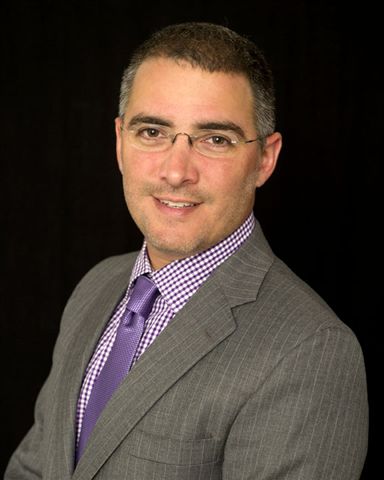A Non-Invasive Solution for Kidney Cancer
September 10, 2018
UH is a pioneer in SBRT for primary kidney tumors, which is gaining traction among experts
Ever since he was a urology resident, Lee Ponsky, MD, Interim Chairman, Department of Urology, UH Cleveland Medical Center, Director, Urologic Oncology Center at UH Seidman Cancer Center; Professor of Urology, Case Western Reserve University School of Medicine has seen the potential of stereotactic body radiation therapy (SBRT) in treating primary kidney tumors. He and colleagues published the first research on the subject using an animal model in 2003, writing in the journal Urology that, “CyberKnife for extracorporeal renal tissue ablation appears to be very promising and demonstrated its ability to ablate a targeted area precisely and completely with relative sparing of the surrounding tissue.”
 Lee Ponsky, MD
Lee Ponsky, MDOver the past 15 years, the research has continued. Dr. Ponsky and colleagues described the first clinical experience with renal radiosurgery in 2007, noting that all patients tolerated each of the four treatment fractions with no adverse events. In 2015, Dr. Ponsky and colleagues at UH Cleveland Medical Center, including main research collaborator and radiation oncologist Rodney J. Ellis, MD, published results of a Phase I clinical trial of the technology, finding that dose escalation with SBRT can be achieved in treating primary kidney tumors without dose-limiting toxicities.
Along the way, the idea that SBRT could be an effective treatment for kidney tumors has gained traction with international champions and research collaborators in Australia, Germany, Canada and Japan, as well as within the United States.
“It’s very new – we were really the pioneers,” says Dr. Ponsky, who is Interim Chairman of the Department of Urology at UH Cleveland Medical Center and Director of the Urologic Oncology Center at UH Seidman Cancer Center. “Now there are a number of people around the world who are evaluating it.”
This international group of researchers recently formalized their efforts, forming the International Radiosurgery Oncology Consortium for Kidney (IROCK). Just this year, members of that group pooled their data to evaluate outcomes for 223 patients, reporting their findings in the prestigious journal Cancer. They reported that stereotactic ablative radiotherapy is well tolerated and locally effective for treating patients who have primary renal cell carcinoma and has an acceptable impact on renal function.
“We’ve really demonstrated that the use of SBRT for kidney tumors is a viable option,” Dr. Ponsky says. “It’s still very new and it’s not for everybody, but it allows us the opportunity to provide patients a completely non-invasive approach to destroying kidney tumors. In fact, we recently got notification that Japan has accepted SBRT for renal tumors for their healthcare system, based on the work that our consortium has published.”
In addition to their pooled analysis, Dr. Ponsky and his IROCK colleagues have also recently issued a consensus document in the journal Future Oncology, outlining best practices for using radiosurgery for kidney tumors. Among the highlights:
- Suitable patients are those who are medically inoperable, at risk of dialysis or decline surgery.
- Both small and large renal tumors (>4 cm) are eligible, depending on the treatment platform and technique.
- Consensus dose/constraints for organs-at-risk are provided for various fractionation schedules.
- Response assessment should include computed tomography imaging encompassing the chest and abdomen for distant disease relapse.
- Frequency of follow-up should be 3–4 monthly for the first year and 3–6 monthly for the second year.
- The role of post-treatment biopsy should not yet be recommended routinely and warrants further investigation.
- A randomized study of stereotactic body radiotherapy versus radiofrequency ablation/microwave ablation should be designed and executed.
As SBRT for treating primary kidney tumors becomes more widespread and accepted, Dr. Ponsky says he remains excited about its potential.
“We need to continue to follow these patients long-term to show the long-term durability,” he says. “We usually start with patients who are poor surgical candidates. Once we demonstrate that this is safe and effective with good long-term results, which we’re starting to see, then we can start offering this to patients as an alternative option even if they are good surgical candidates.”
For more information about this work or to refer a patient to Dr. Ponsky, please call 216-844-4850.


